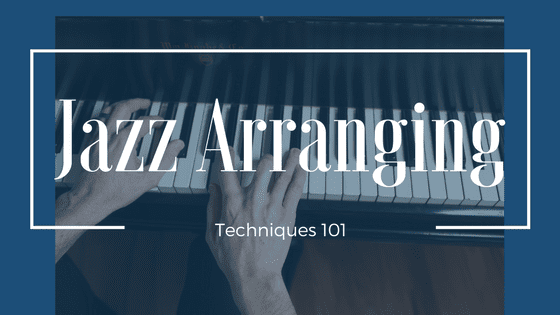Jazz Arranging Techniques 101 - "Sunny"

In this article we're going to challenge your understanding of jazz arranging techniques. We'll start off with a really common chord progression and then tweak it step-by-step, sprinkling in some of the common jazz arranging tricks of the pros. The chord progression is fairly simple - it's from the Bobby Hebb tune "Sunny," which has been covered by many jazz artists, jam bands, and soul/R&B groups. The first step, of course, is to listen to it. Check out the original (link above), but also Stevie Wonder's version, Ella Fitzgerald/Tom Jones, and John Scofield/Pat Martino/Joey DeFrancesco.
Jazz Arranging Techniques 101 - "Sunny": The Original Chord Progression
Here's the progression. The entire tune is pretty much just a 4-bar vamp of these chords (although most versions modulate to various keys during the performance).
Play through this chord progression at the piano in time with your metronome. I'd suggest being able to play at about quarter note = 120 beats per minute.
Jazz Arranging Techniques 101 - "Sunny": Creating a "ii-V" Progression
Let's start at the end. The B7 chord helps this 4-bar phrase repeat back to the Em7 chord by acting as a "V to i" progression. We can add a chord to turn measure 4 into a "ii - V" progression, ultimately resulting in a "ii - V - i" by the time we get back to Em7. Notice that we're dealing with a minor "i" chord, not major. For this reason we'll want to use a "ii - V" in minor mode, meaning our "ii" chord should be a "minor 7 flat 5" chord - F#min7 flat 5.
Jazz Arranging Techniques 101 - "Sunny": Using Tritone Subs
Now we start getting to the fun (and advanced) stuff. We can use a tritone substitution wherever we see dominant 7th chords. Looking at our progression we see a G7 chord in measure 2 and a B7 chord in measure 4. Remember, the tritone substitution works because the guide tones (3rd and 7th) of both the original and tritone sub chord are the same. So we can insert a Db7 chord for the the G7, and an F7 chord for the B7.
Of course, we don't have to use a tritone sub in both places. We can choose to:
- Not use a tritone sub at all, or;
- Use a tritone sub in only one of the two measures, or;
- Use a tritone sub in both measures, or;
- Use both the original chord and the tritone sub in both measures in whichever order you prefer (which requires making each chord a single beat, as below).
The lesson in this step is: consider how many harmonic possibilities you've just created!
Jazz Arranging Techniques 101 - "Sunny": Inserting a Slick Chromatic Passing Chord
Now let's add a chromatic passing chord in measure 1 to help us get from Em7 to Dm7 in measure 2. This is a common device used by jazz players. All that we're really doing is inserting a minor 7th chord that ultimately creates three parallel minor 7th chords in a row. Of course, we need to adjust the rhythm a bit, too.
Besides just comping, consider how many different options you have for soloing now that you've recognized the variety of chords you can choose from.




